Resources
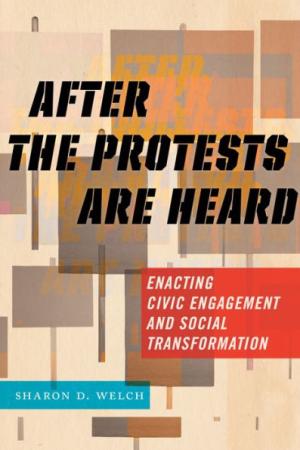
From the Women’s March in D.C. to #BlackLivesMatter rallies across the country, there has been a rising wave of protests and social activism. These events have been an important part of the battle to combat racism, authoritarianism, and xenophobia in Trump’s America. However, the struggle for social justice continues long after the posters and megaphones have been packed away. After the protests are heard, how can we continue to work toward lasting change? This book is an invaluable resource for anyone invested in the fight for social justice. Welch highlights examples of social justice work accomplished at the institutional level. From the worlds of social enterprise, impact investing, and sustainable business, After the Protests Are Heard describes the work being done to promote responsible business practices and healthy, cooperative communities. The book also illuminates how colleges and universities educate students to strive toward social justice on campuses across the country, such as the Engaged Scholarship movement, which fosters interactions between faculty and students and local and global communities. In each of these instances, activists work from within institutions to transform practices and structures to foster justice and equality. After the Protests Are Heard confronts the difficult reality that social change is often followed by spikes in violence and authoritarianism. It offers important insights into how the nation might more fully acknowledge the brutal costs of racism and the historical drivers of racial injustice, and how people of all races can contain such violence in the present and prevent its resurgence in the future. For many members of the social justice community, the real work begins when the protests end. After the Protests Are Heard is a must-read for everyone interested in social justice and activism – from the barricades and campuses to the breakrooms and cubicles. (From the Publisher)
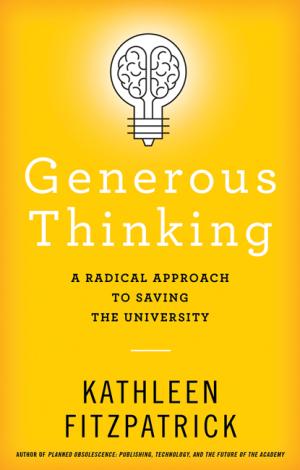
Higher education occupies a difficult place in twenty-first-century American culture. Universities—the institutions that bear so much responsibility for the future health of our nation—are at odds with the very publics they are intended to serve. As Kathleen Fitzpatrick asserts, it is imperative that we re-center the mission of the university to rebuild that lost trust. In Generous Thinking, Fitzpatrick roots this crisis in the work of scholars. Critical thinking—the heart of what academics do—can today often negate, refuse, and reject new ideas. In an age characterized by rampant anti-intellectualism, Fitzpatrick charges the academy with thinking constructively rather than competitively, building new ideas rather than tearing old ones down. She urges us to rethink how we teach the humanities and to refocus our attention on the very human ends—the desire for community and connection—that the humanities can best serve. One key aspect of that transformation involves fostering an atmosphere of what Fitzpatrick dubs "generous thinking," a mode of engagement that emphasizes listening over speaking, community over individualism, and collaboration over competition. Fitzpatrick proposes ways that anyone who cares about the future of higher education can work to build better relationships between our colleges and universities and the public, thereby transforming the way our society functions. She encourages interested stakeholders to listen to and engage openly with one another's concerns by reading and exploring ideas together; by creating collective projects focused around common interests; and by ensuring that our institutions of higher education are structured to support and promote work toward the public good. Meditating on how and why we teach the humanities, Generous Thinking is an audacious book that privileges the ability to empathize and build rather than simply tear apart. (From the Publisher)
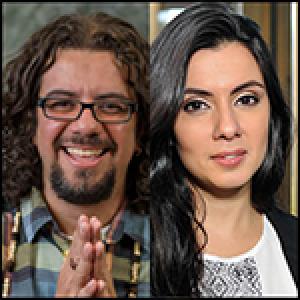
As we finish this semester, it might be a good exercise to look back and see what worked, what didn’t quite work, and what will never work. Student evaluations often convey needs or anger or unfocused frustrations; very little that can actually teach us, so we must ponder our own little achievements and many frustrations. At each semester’s end, it would do us good to ponder what a classroom might be and what we can do in that environment in relation to the larger social-political arena we live in now. In a short excerpt from an interview,[1] Gilles Deleuze speaks about the classroom less in terms of mediating processes of apprehension and comprehension, and more in terms of movements and processes of becoming. He contends: “A class does not have as its sole objective total comprehension [of a subject matter] . . . A class is an emotion . . . It is not a matter of understanding and absorbing everything. It is a matter of awakening in time to capture that which is meaningful [to our own realities].” In his Difference and Repetition, Deleuze speaks of experiences that force us to awaken, to feel, not merely to comprehend something novel: “this something is an object not of recognition but a fundamental encounter,” he writes.[2] The arts are capable of generating such encounters—they undo the seams of our limitations, habitual circumstances, belief systems, values, and knowledge to weave the invisible back into the perceptible. Beyond a representation of subjects, facts, history, data, encountering art affectively allows us to sense and not cling to the world as it is but to imagine it more expansively, with further potential becomings. As such, the arts require the totality of our beings-in-bodies to be present and to co-create our realities anew—whether in classrooms, art galleries, the streets, or in the intimacy of our closest communities. Artistic manifestations often allow us to access and connect, individually and collectively, with what is meaningful, potentially generative, and ultimately transformative. It is less about fully understanding the world as such and more about being alert to discover the opportunities that this world offers us. For that to unfold, we must rise, we must awaken! We must be willing to co-participate in this unfolding. There is no room for passive observation here. We must be willing to move from dormant complacency into the position of co-creators, conjuring up new possibilities of being. Julia Kristeva describes this aesthetic awakening with a reminder that our bodies must take part in the experience with art not only to contemplate the art object but also to sense it. She writes: “The ultimate aim of art is perhaps what was formerly celebrated under the term of incarnation. I mean by that a wish to make us feel a real experience [in the body]” through lines, colors, sensations, abstraction, volume, textures, and participation.[3] The arts are poised with the power to remind us to celebrate our body-realities. As Mayra Rivera puts it, works of the imagination allow us to move beyond the limits of our earthly flesh and encounter God as we strive to transform this world. Seeing and touching and moving and speaking and feeling is participation in theopoetics—an articulation of the character of God understood through our embodied, affective experiences.[4] Brazilian visual artist Lygia Pape’s performance piece entitled Divisor (1968) does just that: it probes the limits of our sensorial and psychological conditions, relying heavily on the physical, embodied, affective, and—most importantly—collective participation of viewers. Divisor is at once performance and sculpture, interweaving bodies of spectators/participators, physical space, mobility, and artwork in a literally moving piece.[5] Originally performed in the city of Rio de Janeiro in 1968, this performance was re-enacted in the streets of New York on March 26th, 2017, in collaboration with the Metropolitan Museum of Art.[6] Comprised of a 30-meter, white cotton fabric in the shape of a square, the piece has two hundred holes symmetrically perforated in the fabric through which viewers are invited to “wear” the sculpture, so to speak. Once 200 co-participators and co-creators are properly positioned, they are invited to enact a procession while wearing the artwork. Pape’s white fabric reposed over the shoulders of the participants, isolating the rest of the body, allows a commanding procession to take place. The effect is both poignant and powerful: a multitude of differently “bodied” people, unified by what takes on the shape of undulating waves, moves through the public arena in a procession. Their movement transmutes precariousness into potency. The work of art highlights the simultaneity of the shared life of those present: their bodies both tied to one another and acting upon one another, are transformed by one another. Such “imbrication of bodies in the fabric of the world,” as Rivera puts it, facilitates a union of sorts. What works of art such as this require of us is an awakened presence that is able to move forward in solidarity, entanglement, capacious resistance, and, most importantly, with response-ability, to borrow Catherine Keller’s language. How can we teachers conjure up opportunities in our classrooms that resemble the communal potency of Divisor? As the semester draws to a close and we reflect on strategies for learning and teaching and living, we ask ourselves: how can we wake that which is dormant inside of us? If another reality is possible, how can we work towards its actualization? How can we even keep the love of teaching when our very schools are crumbling down? How can our very understanding of education continue to produce a teaching-wonder and teaching-resistance that is so fundamental to the fullness of our lives and our communities? Knowing the dazzling possibilities of education and the dangers entailed in it, we are required to place the practice and the thinking of education in relation to the structures of our time. And we don’t live in the easiest times. Educators are rapidly becoming dispensable people who are supposed to teach whatever it is that has no critical engagement. In Brazil, for instance, a growing number of people are calling Paulo Freire to disappear from curricula. He is accused of being an ideologue, a communist whose education project aims only to destroy the values of family and country. Just recently, Judith Butler was almost physically attacked at the Sāo Paulo airport by a Brazilian woman who saw in Butler’s feminist and queer theories a threat to what she understood as the “traditional” Brazilian family. In the US, education, like health insurance, religion, among a great number of other things, has come to be understood as a private value dependent on individual efforts. Having been taken hostage by neoliberal systems, education must “produce” something, preferably at a profit. In this model, students must be treated like customers—education is less about formation than production, like an assembly line. The assaults by the Department of Education, the constant push to make education a matter of corporate profit and endless student debt, the targeting of colleges as a bad thing for the life of the country, the cutting of educational budgets for the sake of “austerity plans,” the creation of prison systems, the loads of money the Koch Brothers injected into higher education, the Senate Tax Bill that was passed recently, all form a narrative worthy of Dante’s Inferno. If education should only serve to produce people to fulfill the lines of jobs, the endless testing and precise measurements of syllabi begins to make sense. No wonder many of us in the classrooms have become apathetic and anesthetized. If one was able to go to AAR this last November and paid attention to the conversations that happened in between the academic sessions, you would know that the plight of so many educators is dire. I heard a professor saying to a friend at the exhibition hall: “I have been battling for 3 years now and I can’t continue doing adjunct jobs. This is my last year trying to find a job, or I will have to find something else to do. I can’t keep living this way, I have a family.” If the classroom and school bring daily struggles, embarrassment, precariousness, and even humiliation to our colleagues, how are we to keep our love of teaching? It is easy for me Cláudio to say, let us keep on loving our teaching and do it the best way we can. But I have a good job with great colleagues. Yohana who co-writes this blog post is a Ph.D. candidate. Will she ever find a good job? We need to engage our profession with a more critical sense of what it means to us, and how it can be made more expansive and sustaining. How can we support and accompany our colleagues who contest the violence of a plutocratic state, the erosion of our communities, the criminalization of protest, rising poverty, constant blaming of the poor, debt, emotional and physical exhaustion of those who are poor? There are no easy answers. There were never any easy answers. Perhaps we can start by thinking that our classrooms are places where we can still be awakened, that every time we meet we can raise up what was dormant in us. Perhaps we can discover that we need to pay attention to our emotions, our bodies, the communities that are formed in each classroom. Perhaps we ought to find better and more sustainable technologies of self and communal awareness, or spiritual practices that can become resources for our constant battle against the empire and its neoliberal systems. Perhaps we can also see our gift to teach as a way of positioning ourselves: first within ourselves, and then as a way of positioning ourselves in the world. Perhaps . . . . [1] https://www.youtube.com/watch?v=-ln2A0fkA78 [2] Gilles Deleuze, Difference and Repetition, trans. P. Patton, (New York: Columbia University Press, 1994), 139. [3] As quoted in Stephen Bann, “Three Images for Kristeva: From Bellini to Proust,” in Parallax, 1998, vol. 4, no. 3, 64–65. [4] You can see more of this articulation in Rubem Alve’s work. [5] Fernanda Pequeno, Lygia Pape e Helio Oiticica: Conversações e Fricções Poéticas (Rio de Janeiro: Editora Apicuri, 2013). [6] Metropolitan Museum of Art *Blog Originally Published on December 14, 2017
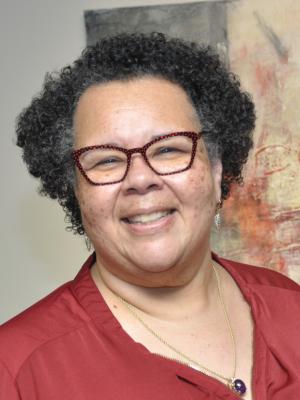
Have you ever asked a question in class for which you did not know the answer; a question for which you did not have THE one answer in mind? Have you ever planned an assignment or designed a learning activity that was so freewheeling that you did not know what was going to happen? What kind of teaching requires the teacher to be comfortable not knowing what will happen next or ever? I suspect it is teaching which is attentive to the personalities, dreams, capabilities, fears, and know-how, of each student in particular, and the entire class as a whole. Knowledge of each student allows for learning activities, group assignments, selected reading materials, and course aims which are sophisticated, risky, and precisely designed for the times at hand and the diverse contexts for which the students must be prepared to lead. My hunch is that we too typically create assignments for which the answers and outcomes are forecastable because we have not taken the time to know who is in our classroom. We have specific ideas, standards, and quantifiers for the student to “get it right” with little understanding of the student’s individual life experience or knowledge base. Students in turn, while navigating the current educational system are brilliant at analyzing each professor’s wants, then giving that and only that. Professors’ quirks are a text that is read, understood, and traversed as much or more as the content materials of our courses. Hallway gossip and faculty reputations assure us that adult students are experts at studying the grading habits and personality types of teachers. In other words, teachers teach with strict disciplinary maps and scripts - a strict adherence to formulaic curriculum – a kind of one size fits all students. The questions and the answers are charted out and planned before gathering with students. Students strain as much to learn the formula of the prescribed script as they do to learn the content of the script. They ask, “Is this going to be on the test?” They say, silently or out loud, “Just tell me what you want me to tell you back?” Students learn the ways of gaming the system better than they learn the content of our courses. What if our prescribed assignments are a detriment to our student’s ability to be effective in the workforce? What if scripted outcomes serve only to further domesticate learners? What if the lack of open-ended exploration champions mediocrity rather than excellence? I suspect it will take creative bravery to reshape, rethink, reconceive our classrooms. And not just creative bravery in-general, but bravery which prioritizes learning our students, their uniquenesses and their potentials. The good news is that creative bravery is commonplace among artists and people who understand creativity as a way of life. The challenging news is that this kind of bravery is suspect and punished in the current educational system. A clip that went viral on social media depicted the ritual of an elementary school teacher meeting his students each morning at the doorway of their classroom. The daily ritual was to shake hands with each student each morning. Each student had a unique handshake for greeting the teacher and the teacher knew the unique handshake for each student. Some of the handshakes were simple – one or two gestures. Other handshakes were complex – looking more like a dance between student and teacher than a traditional handshake. It was clear to me that this kind of welcoming communicated to each student that he/she/they were seen and known by the teacher. This was a powerful expression of a teacher who understood the necessity of each student feeling their distinctiveness, being in relationship with the teacher, and knowing they were seen. When students feel seen, known, and welcomed in classrooms, learning improves, deepens, and becomes more meaningful. The myth of teaching for one-size-fits-all is possibly the worse practice of our teaching craft. We must grapple with finding ways to identify and honor that which each student brings into the classroom because each brings uniqueness. In a jazz band, no one expects all the musicians to play the same instrument – that would be ridiculous. No one criticizes the drummer for drumming or the saxophone player for playing the sax. Each musician is expected, required even, to bring what they have in the way that they have it; in their own voice. Each instrument is required to make the sound of that instrument. Consider then, that each student should be expected to bring their unique voice and particular understanding to the collective composition of the classroom and that the teacher must welcome all the different kinds of voices. Creativity requires diversity. The band leader’s job is not to strip the musician of their uniqueness or their sound, but to blend, sculpt, highlight, spotlight and listen. The leader’s job is to know the many voices and create ways of showcasing each potential contribution. One of my ongoing frustrations while I was on a teaching faculty was that by the end of my introductory course I felt as if, now, I knew my students well enough to teach them, but our time was up. It took time, a semester or longer, to learn to hear them, to be able to sense their concerns, learn their sensitivities and sensibilities, and to relate my expectations for their learning. By the last day of class, I knew their patterns, their vocabulary, their senses of humor and how to alleviate some of their fears. By the last day of class, it felt as if I could NOW shake their hands or ask them truly open-ended questions or give them innovative learning assignments for which I had crafted with each one in mind. Forming relationships with our students takes time that is so often not built into our typical models of education. There is an intimacy that occurs between learner and professor that only happens in the relationship of teaching. It is a profound experience to be seen by a respected teacher and told that, as a learner, you have what it takes. These relationships are potentially life giving and life changing. These relationships are not formed when classrooms operate on a factory mentality where student needs are relatively inconsequential to the teaching. The intimacy shared between teacher and learner makes vivid the humanity of each. Classrooms are spaces where the vulnerability and openness of the adult learner can be met with hope, empowerment, reinvigoration of curiosity, and healing imagination. This pedagogical intimacy was made vivid to me the first time I read a letter of recommendation written for me by my graduate school professor, advisor and mentor. The letter described many of the attributes and capabilities I knew I possessed. It also discussed his vision for my potential, my promise, my likely successes as a scholar and religious leader. Much of the budding possibility that he described - I was unaware of. And, until reading his letter, I was unaware that he had seen me so well. My mentor, for the three years of study, had paid attention to me in our courses and as I worked as a research assistant. This letter humbled me and set an expectation for which I have been striving. In contrast, as a reader of applications for jobs, grants, or other high-level projects, I have read letters of recommendation which demonstrate the writer has no passion or knowledge of the applicant. The letter is perfunctory – a kind of mechanical formula which might fit any person who sat through a course and for which, now, there is an obligation for recommendation based upon an exemplary grade. I have actually read the same prose in a letter submitted by one recommender for two different people (oopsie!). It is clear that the writer of the letter did get to know the student and cannot earnestly recommend the applicant. Many awards have been denied based upon the weakness of a flimsy recommendation by a person who wrote a one-size-fits-all recommendation. If we do not get to know our students, we cannot recommend them for anything. Teaching at a distance during quarantine has strained and taxed our teaching communities in ways we have not yet fully lived. I suspect we have lost intimacy with our students. The physical separation of teaching synchronously or asynchronously coupled with the lack of casual interaction in the hallways, cafeterias, and school assemblies has frayed our relationships and weakened our educational communities. The content of our courses is paramount, but without deep relationships with our students, teaching rings like a hollow bell. There is something intangible and irreplaceable about being face-to-face with students as they learn and grow. What would be needed to get to know students who are enrolled in your course before planning the course? What exercises might you plan for the first weeks of a course which would enable you to see, feel, and hear the potentials of our students so that lesson planning might be more precise? What learning activities can be tailored to the uniquenesses of each student? What would it mean to plan a syllabus which can be refined as students become more vivid to you throughout the semester? What kinds of community activities will need to be designed for those who entered degree programs during the quarantine resulting in only being known through online mediums? If you are teaching huge classes, what strategies will enable you to get to know students? The risk of getting to know our students is, I suspect, well worth it.
What kinds of preparedness is there for events like mass shooting or a devastating storm? What does it mean to teach immediately after these events? What happens when these events occur in your school or immediate community or in your classroom? How does one teach when there is a national interruption? What is a trauma informed classroom?

In Interfaith Justice and Peacemaking, an integrative core class which explores the history of tolerance, intolerance, and interfaith efforts in the United States, one of the core texts we use is Eboo Patel’s Out of Many Faiths: Religious Diversity and the American Experience (2018). Central to Patel’s argument is that America needs new, more inclusive civil religious narratives. His book chronicles some of the ways in which Americans have expanded civil religious narratives in the past, however imperfectly, through the invention of the phrase “our Judeo-Christian heritage” in the mid-twentieth century as well as through expanding notions of whiteness. According to Patel, we are at a pivotal juncture in our nation’s history. We need new narratives. Without them, whole swaths of people will continue to feel unwelcome and alienated, and since the health of our civil society depends on civic participation from all of its citizens, our failure to create new, more inclusive stories of who we are could have disastrous consequences. In Out of Many Faiths, Patel focuses on the Muslim-American experience in particular, highlighting ways in which Muslims have been excluded from American society, not unlike what Jews and Catholics experienced at other moments in our history. He also highlights ways in which Muslims are working to expand our civil religious narrative. The somewhat off-color and yet unexpectedly unifying SNL monologue delivered by Aziz Ansari the night after Donald J. Trump was elected president is, according to Patel, one such example. Towards the end of the semester this year, I invited students to highlight other recent examples in the media of artists and performers and making efforts to expand our civil religious narrative. One student presented on Jennifer Lopez’s performance of “This Land is Your Land” at the Biden/Harris inauguration. He argued that Lopez’s performance of this important American folk anthem expands the civil religious narrative by linking a population of people who sometimes feel unwelcome—Hispanics—with a powerful and pervasive American symbol, suggesting that they are. Another student presented on the Black Eyed Peas’ 2009 release of the song “Where is the Love?” featuring black and brown Americans against the backdrop of one of the most prominent of civil religious symbols, the American flag, to the tune of the powerful lyrics calling for unity and love. Just days after these presentations, I attended our university’s commencement in which a Jewish student was asked to deliver the invocation. Given that my university is Jesuit Catholic, this felt like an important moment. I was moved to tears by the eloquence with which she invoked a spirit of blessing upon our community. I’m not sure asking this student to deliver the invocation was an expansion of our civil religious narrative, given that Americans are already generally comfortable with prayers from Christian and Jewish traditions. It did, however, feel like a possible expansion of what it means for us to be Jesuit. Perhaps inviting students of various faiths to lead us in prayer is not a watering down of our Jesuit identity, but rather a truer expression of who we are. Or was it merely token, even exploitative? Did asking her to represent herself in this way cover up all the ways in which we have failed and continue to fail to build a more inclusive community? As part of a faculty reading group on Khyati Joshi’s new book White Christian Privilege (2020), several of us have been discussing the question, how is Regis Catholic? On a micro level, it’s the same question I have been asking my students to think about all semester, how are we American? In other words, what values hold us together? And can those same sets of values be used as a source of inspiration to build a more inclusive and religiously diverse community? My students in Interfaith Justice and Peacemaking struggled to answer this question. When discussing the narratives we tell about who we are as a nation, some identified with Nikki Haley’s speech at the 2020 Republican convention, where she argues that “America is not a racist nation,” or, as she describes, at least not fundamentally so. Other students found Zenobia Warfield’s (2021) story of America, “This is America,” more compelling. In it, Warfield argues that the white supremacist insurrection on the capital wasn’t un-American as many claimed; it was in fact emblematic of who we are as a nation, as “this country was founded on violence and desecration.” This was a difficult, emotionally-laden conversation to facilitate, the kind Khyati Joshi urges educators to engage with, rather than shy away from. For we all have different levels of investment in the systems that uphold religious and racial hierarchies and dismantling these systems requires emotional introspection (209). In the faculty reading group on Joshi’s book we reflected on our recent participation in our university’s commencement ceremony, discussing all the moments when we were asked to participate in both civil religion and the traditions of our Jesuit university. Not all of us were comfortable removing our hats, or standing for the national anthem, and though moved by the invocation performed by our Jewish student, some of us worried she had been used. We do not have consensus about what it means to be a Jesuit university, and thus how we should represent ourselves at such a ceremony. Nor is there consensus about who we are as Americans. If we want to expand our civil religious narrative, how do we go about doing so? Do we need to build consensus first? Does that begin in the classroom? Does it take place in the planning of commencement ceremonies? There is a lot of emotional investment in these questions. Fears will surface when we start to talk about changing the narrative of who we are at a national or collegiate level—fears that reshaping, or expanding, will result in something being lost. I would argue that neither our national identities, nor our religious identities (at the personal or college level), need to be lost in order for us to become more inclusive, but identities do need to change, and there will be growing pains that come with that change. It is my hope that Joshi’s approach, of foregrounding the emotional together with the intellectual, can provide us with useful resources as we navigate these growing pains. Image #1 Jason Leung @ Unsplash Image #2 Lucas Alexander @ Unsplash Image #3 Jordan Crawford @ Unsplash Image #4 Koshu Kunii @ Unsplash
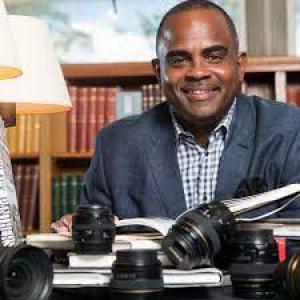
As a writer and a teacher I am always looking for ways to inspire my creativity. This summer I have committed to a practice of getting out in nature. I will be visiting national parks, state parks and doing some cabin stays. The goal is to incorporate the sounds and sights of nature as I seek times of solitude, stillness and quiet as keys to my inspiration. The first such trip this summer was to The Getaway two hours north of Atlanta, with a stop by Chattahoochee– Oconee National Forest. The video below shares my experience. My hope and prayer is that you might be inspired to find the practice of being in nature, solitude, stillness and silence as a means to fuel your creativity as a teaching professor. Photo 1: CHATTAHOOCHEE–OCONEE NATIONAL FOREST @RALPH BASUI WATKINS Photo 2: THE GETAWAY @RALPH BASUI WATKINS [su_spacer size="20" class=""] [embedyt]https://www.youtube.com/watch?v=CuhjCWFrAic[/embedyt] [su_spacer size="20" class=""]
This virtual symposium will gather colleagues, representatives of schools, for six sessions (November to June), while, at the same time, those representatives also meet regularly with colleagues at their respective schools. The meetings with colleagues at each school will be to metabolize, disseminate, and design based upon the discussions with Harris and Harvey. In so doing, the gathered conversations with Harris and Harvey will seed and inspire embedded projects in multiple locations about the nature and workings of race, racism, and white supremacy. The two layers of discussions along with the embedded project will be catalysts for institutional change toward health and wholeness of many campus climates and institutional ecologies.